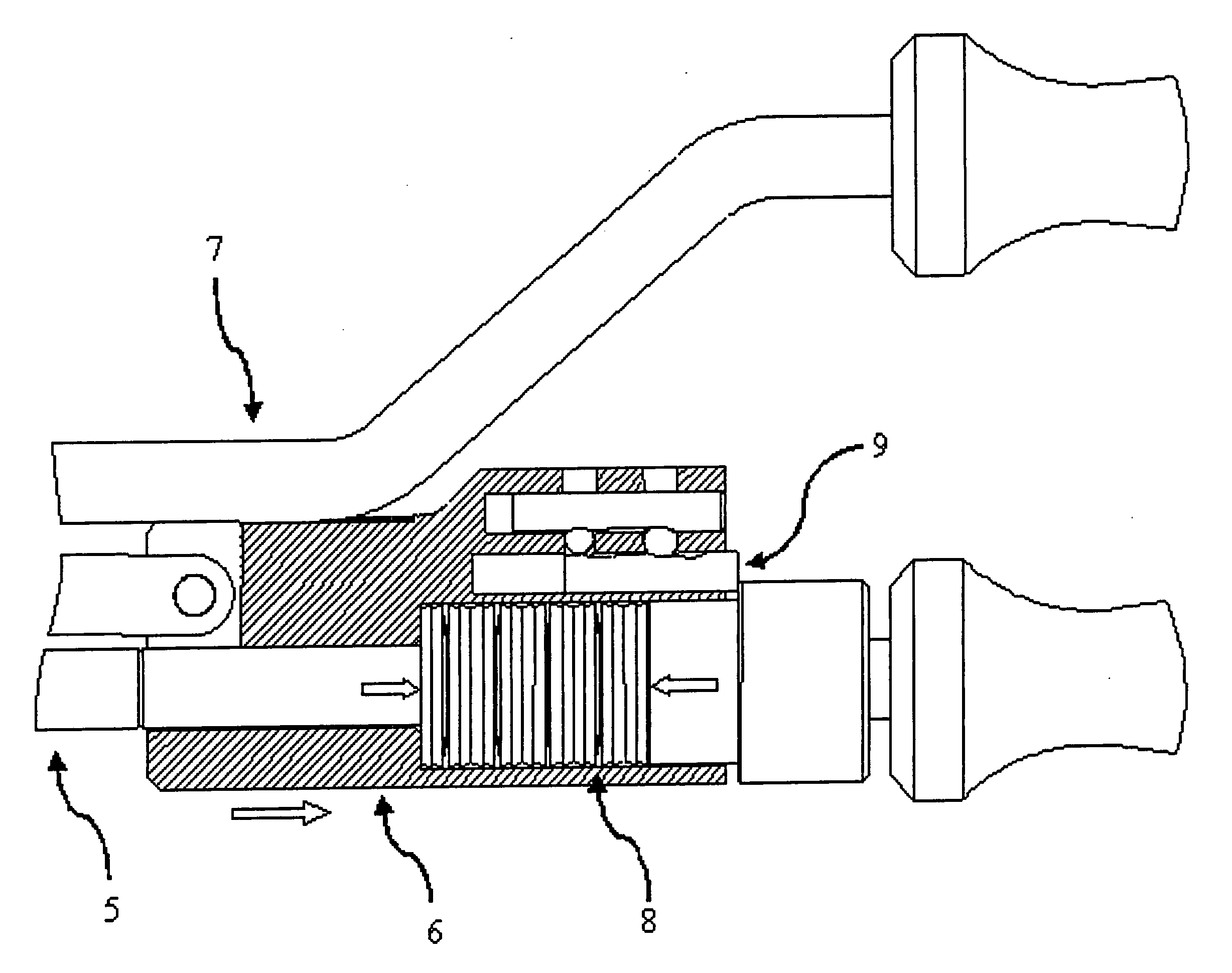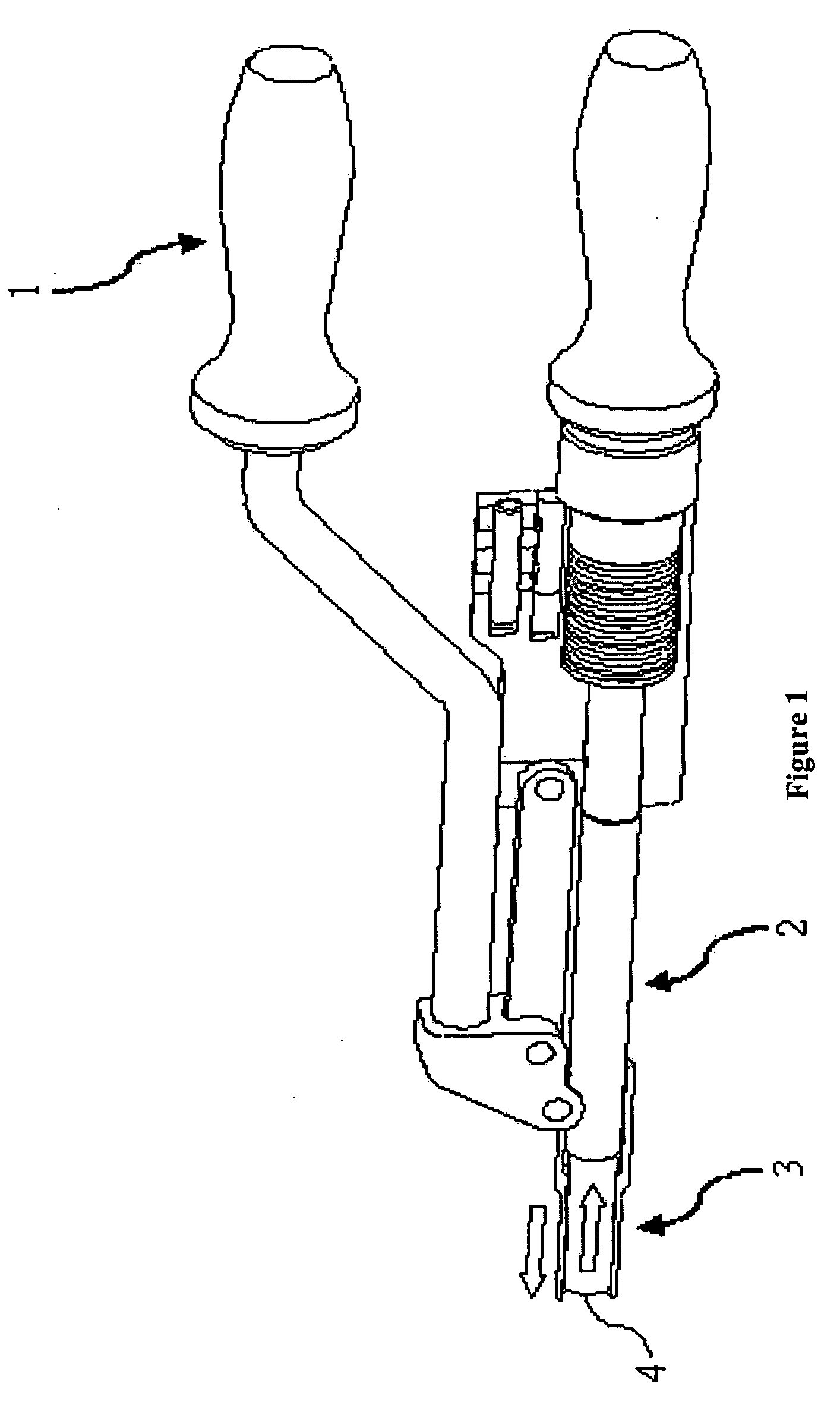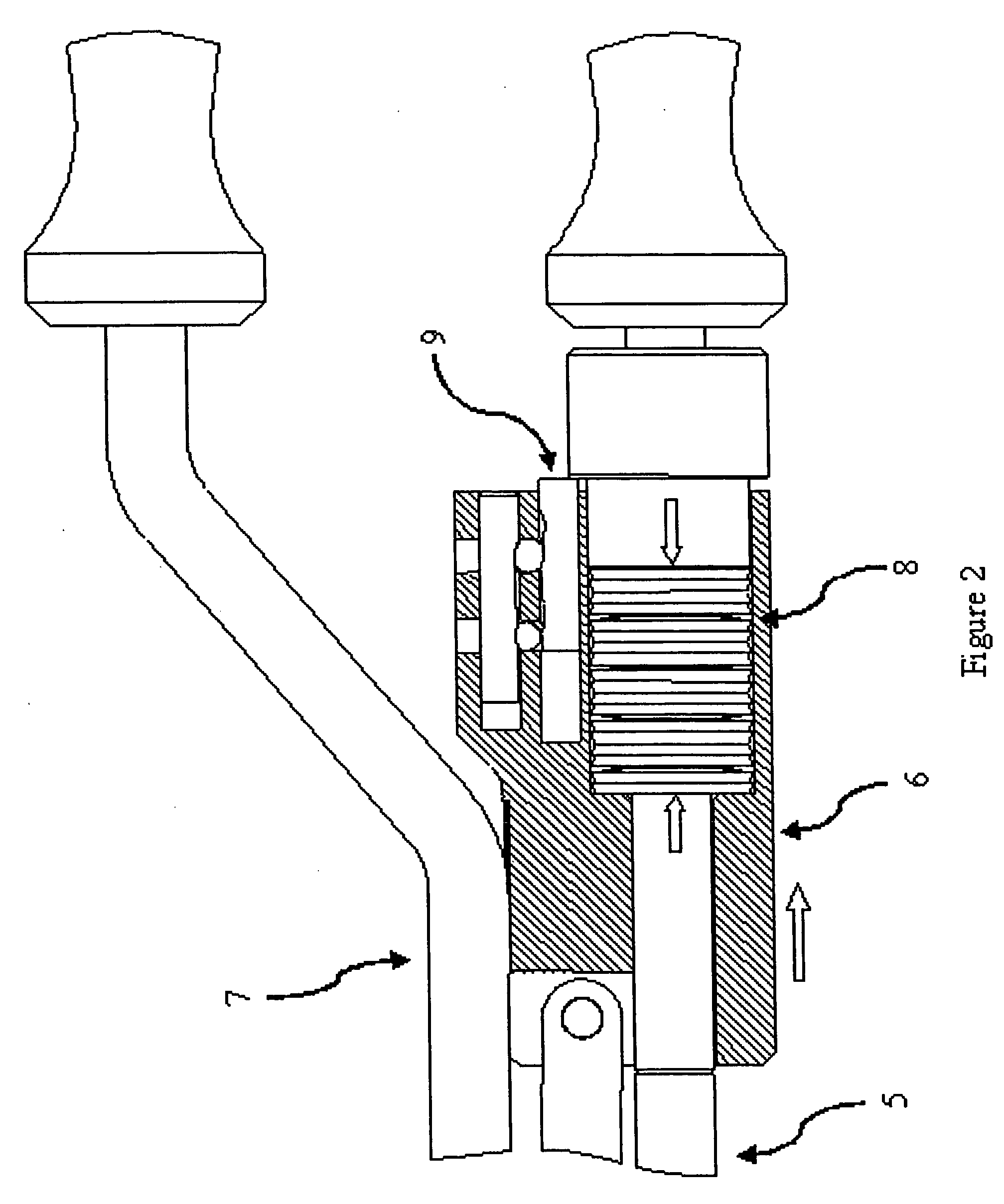Modular implant assembly tool
a technology of modular implants and assembly tools, which is applied in the field of medical equipment and procedures, can solve problems such as bone fractures, premature implant failure, and premature failure of implants
- Summary
- Abstract
- Description
- Claims
- Application Information
AI Technical Summary
Benefits of technology
Problems solved by technology
Method used
Image
Examples
Embodiment Construction
[0021] This invention improves upon existing designs by directly measuring, independently from input variables, the axial force generated while assembling modular implant components.
[0022] In a preferred embodiment of the present invention, this is accomplished by using a spring (or springs) to measure the true axial force being exerted. Springs deflect a predictable amount under load. If this deflection is measured and the spring rate is known, a force can be calculated.
[0023] In one embodiment this deflection can be measured using a scale. This scale may be labeled with force as the units. The scale may also represent a range of desirable loads. This range may be labeled with text, or color coded, to indicate adequate or inadequate assembly loads.
[0024] In another embodiment of the present invention, the required spring deflection may activate a trigger that alerts the user that the desired load has been reached. This trigger may release a button, make a sound, switch on a ligh...
PUM
| Property | Measurement | Unit |
|---|---|---|
| force | aaaaa | aaaaa |
| displacement | aaaaa | aaaaa |
| piezoelectric voltage | aaaaa | aaaaa |
Abstract
Description
Claims
Application Information
 Login to View More
Login to View More - R&D
- Intellectual Property
- Life Sciences
- Materials
- Tech Scout
- Unparalleled Data Quality
- Higher Quality Content
- 60% Fewer Hallucinations
Browse by: Latest US Patents, China's latest patents, Technical Efficacy Thesaurus, Application Domain, Technology Topic, Popular Technical Reports.
© 2025 PatSnap. All rights reserved.Legal|Privacy policy|Modern Slavery Act Transparency Statement|Sitemap|About US| Contact US: help@patsnap.com



